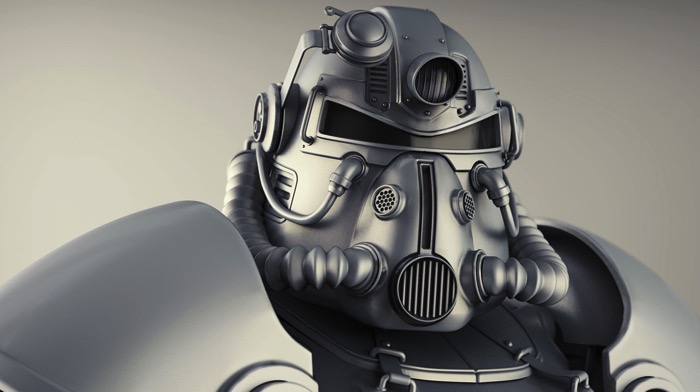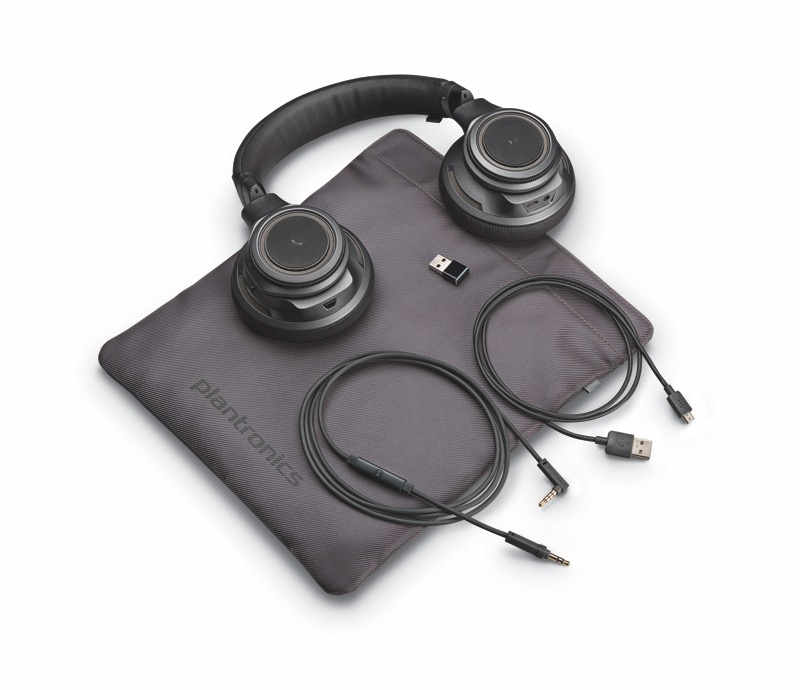I have played both Dragon Age Origins and Dragon Age 2 – in some cases multiple times – but there were several things that I wish I knew before starting to play Inquisition. Here’s my list.
– This first one is something I actually did hear before I started, but it bears repeating. GET OUT OF THE HINTERLANDS! The starting sandbox is as beautiful as the others, and has a ton of quests (called missions) you can take on, but it’s very easy to get stuck there for 20 hours. Gain about 10 Inquisition Power and 3-4 levels under your belt (around 3-4 hours of play), then move on. You can (and in fact have to) go back to the Hinterlands later, so don’t worry, you won’t miss anything.
– Personal preference, turn off lip shine. It’s under Makeup in the character customization system (which you should definitely check out when creating your character’s look), and leaving it at the default makes you look like you overdosed on lip gloss. On a male character, it looks… really odd.
– You can JUMP! For those new to the series but who have played other games this isn’t a shock, but for those of us who played the earlier games, this is a huge change. There are still some places where you hit the dreaded “invisible wall,” but they’re few and far between in this game.
– The left thumstick will perform a “search” function when you depress/click it. This is important, as it will highlight any loot, resources, and objects of interest near you. Considering that the landscape can very easily hide things, and the number of things out there, you should search OFTEN to find stuff. In the latest patch, found items also show up as gold dots on the mini-map, making it even easier to locate them.
– Your companions don’t automatically join you. Unlike other DA games, you have to actively seek out some companions, and then convince them to join up. This is generally easy to do, but also easy to miss. Keep an eye out for new missions, and re-visit places from time to time – you’ll find that companions will turn up if you follow that advice.
– THERE’S NO HEALERS, but there are several types of healing potions. You also do NOT heal between battles automatically, but must either use potions or return to Inquisition Camps and/or your Stronghold to replenish your health. Warriors also have the Guard talent that gives them an extra health-bar before they start losing HP, and Mages can cast Barrier over their teammates to do the same, so you can live without healing magic.
– While we’re on that topic, fast-traveling to a camp automatically refills your health and BASIC healing potion supply – you do not have to actually “rest” to do it unless you walk into a camp instead of fast-traveling there.
– And refilling other potions (heal over time, mana, grenades, etc.) requires a Potions Bench found in camps and strongholds and reagents (herbs, etc.) and must be done manually. Only your basic health potions are refilled automatically at camps.
– One last note on this, your basic health potions are shared amongst the group, while all other potions and potables are per-character. This means that each character can carry stuff specific to them, but also means that they can’t access potions carried on another team member. Choose wisely.
– OK, I lied, one more on potions. Next to the potions table in most strongholds is a potion upgrade table. Use this along with consumables to improve your potions, elixirs, and grenades to make them last longer, work better, etc.
– Spend your Inquisition Perk Points wisely, they’re very limited and you may only get 10 or so in a playthrough. Some ones to save up for are “Deft Hands, Fine Tools” which lets your rogues pick more advanced locks; and “Forward Scouts” which makes resource nodes like lumber and quarries show up on your world map. There is also a perk that increases the number of healing potions the team can carry, and another to add a 3rd potion slot to each team member – both are quite useful. Finally, there is a Perk that dramatically extends the range of the Search feature – not totally critical but very useful. Otherwise, check all categories and map out which perks you want early in the game.
– DO NOT SELL ALL VALUABLES! Some stuff you pick up that gets put in the Valuables tab in your inventory is actually critical for quests! You can tell what you should hang on to in two ways. If it’s icon is gold, keep it. If it has “flavor text” that shows up when you hover over it, keep it. For the most part, anything else is either not used in quests, or there are enough of them that you can find more later on to turn in. NEVER use the “sell all valuables” option or you will ditch some important stuff.
– You can’t tell your companions’ current approval rating except by trying to figure it out by how they speak to you. Unlike previous games in the series, the companions don’t have approval bars on their Character Sheets, you just have to keep a close eye out for approval messages on-screen and try to glean information based on how they talk when you interact with them. Meaning that if a companion isn’t happy with you, they’ll be very curt with you when you speak to them, as opposed to very friendly when you’re in their good graces. It is not always obvious, either, so your mileage may vary. Companions can get pissed off enough to leave, so if one of them you want to keep starts getting snippy, find ways to make them happy (or at least neutral).
– On that topic, you can’t win them all over completely, so don’t try. Different decisions will make some companions happy and piss off others – even if they are not in your party at the time. That means no more “just don’t take that person on that mission” to get around the approval system anymore. You do seem to be able to keep most of them from being totally pissed off at you – with a LOT of work – but you won’t be able to make everyone happy. If you don’t think you want them in your party, piss them off and they’ll eventually leave (most of them anyway). Otherwise, keep them neutral to happy.
– And one last bit of info on approval. Most characters have a certain set of personality traits. When you speak to them, choosing speech snippets that align with those traits will help you gain approval, so dive deep into the character development of your companions if you want to know how to best approach them.
– Visit the Dragon Age Keep! The Keep allows you to spell out choices you made from the previous Dragon Age games. For those who played through the whole series, this is critical, as many of the choices you made in previous games have an impact on Inquisition, sometimes in surprisingly big ways. Not to worry if you haven’t played the previous games, Inquisition has a default World State it will use that steps through BioWare’s suggested outcomes from Origins and DA2.
– Speaking of different outcomes, you should save often, and use multiple save slots. I usually have 5 save slots and rotate between them as I go. There are a LOT of decisions to be made, and you might not like the outcome of some of them. Multiple saves allows you to scroll back in time and try again. The game does auto-save, but those autosaves get overwritten, so they’re not a lot of help.
– Play with the crafting system. Unlike in other games, the system in Inquisition actually yields good results after a while. More-so in weapons than in armor, but still good to check out early in the story through the end-game.
– Explore EVERYWHERE! While you should leave the Hinterlands early, go back to it and explore all the areas it has to offer. Do this with each sandbox you gain access to. Different quests, Advisor Missions, and other fun stuff won’t show up until you discover them in the sandbox. This is critical for your Strongholds. Vendors, quests, and interactions tend to hide in odd corners in those places.
– Finally, check the War Table often and do the Advisor Missions (the missions that you send your council on instead of going yourself). They yield some interesting results, and in some cases very major results. As it says above, no spoilers in this one, all I’m saying is do as many Advisor Missions as you possibly can. Hint: Time doesn’t really stop when you exit the game, so do the multi-hour Advisor Missions right before you’re done for that gaming session, when you open the game again, they’ll be done.

 The “Internet of Things” is a real thing these days, with everything from toothbrushes to refrigerators now connected to wifi networks and spewing forth data to so many locations it’s hard to track. But a few disturbing trends in the IoT world definitely should give us all pause for thought.
The “Internet of Things” is a real thing these days, with everything from toothbrushes to refrigerators now connected to wifi networks and spewing forth data to so many locations it’s hard to track. But a few disturbing trends in the IoT world definitely should give us all pause for thought. Many fans of Fallout 4 are notably still confused by the state of the world around them. The post-apocalyptic landscape is easily explained, but what exactly happened that lead up to it? This post will attempt to explain the major plot points to you.
Many fans of Fallout 4 are notably still confused by the state of the world around them. The post-apocalyptic landscape is easily explained, but what exactly happened that lead up to it? This post will attempt to explain the major plot points to you. Recently I looked into various task-management apps that will work across my Mac and mobiles (iPhone and iPad). Of course, that means I also need to synchronize data across those platforms, so that tasks created or completed on one device reflect as such on all the other devices. While that’s not generally an issue for most of the major software vendors, it does bring up some important concerns that most of those same developers have completely ignored.
Recently I looked into various task-management apps that will work across my Mac and mobiles (iPhone and iPad). Of course, that means I also need to synchronize data across those platforms, so that tasks created or completed on one device reflect as such on all the other devices. While that’s not generally an issue for most of the major software vendors, it does bring up some important concerns that most of those same developers have completely ignored. I finally decided to join the 21st century and get a bluetooth stereo headset for my mobile devices. Up until now I’d been happy with a wired headset and a bluetooth earpiece for when I just needed to make phone calls and nothing else, but with a recent job switch that focused a lot more on my mobile phone, and all-in-one device was going to be a better fit. Looking through the available options, I found a massive choice in products, and a ton of different feature sets to pick from. Luckily for me, several co-workers had gone through this process in the recent past, and helped me narrow down the choices to about 4 selections.
I finally decided to join the 21st century and get a bluetooth stereo headset for my mobile devices. Up until now I’d been happy with a wired headset and a bluetooth earpiece for when I just needed to make phone calls and nothing else, but with a recent job switch that focused a lot more on my mobile phone, and all-in-one device was going to be a better fit. Looking through the available options, I found a massive choice in products, and a ton of different feature sets to pick from. Luckily for me, several co-workers had gone through this process in the recent past, and helped me narrow down the choices to about 4 selections. Please take a moment and study the picture of the cute kitten. When you’re done reading, you’ll probably have steam coming out of your ears as you swear at the monitor/mobile screen, so take some time. His name is Monty, and he is very cute.
Please take a moment and study the picture of the cute kitten. When you’re done reading, you’ll probably have steam coming out of your ears as you swear at the monitor/mobile screen, so take some time. His name is Monty, and he is very cute. I made a prediction a couple of years back, and we’re beginning to see signs that it might just come true, a bit sooner than I expected, but still coming true.
I made a prediction a couple of years back, and we’re beginning to see signs that it might just come true, a bit sooner than I expected, but still coming true. While I typically wait a few months before updating to the latest major release of any OS, the time has come to start using El Capitan (OS X 10.11). The OS itself seems to have stabilized well, with the first and second major round of patching already complete an out in the wild. Additionally, there’s another pretty big reason to finally bite the bullet and upgrade:
While I typically wait a few months before updating to the latest major release of any OS, the time has come to start using El Capitan (OS X 10.11). The OS itself seems to have stabilized well, with the first and second major round of patching already complete an out in the wild. Additionally, there’s another pretty big reason to finally bite the bullet and upgrade: